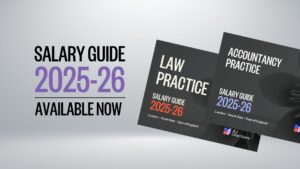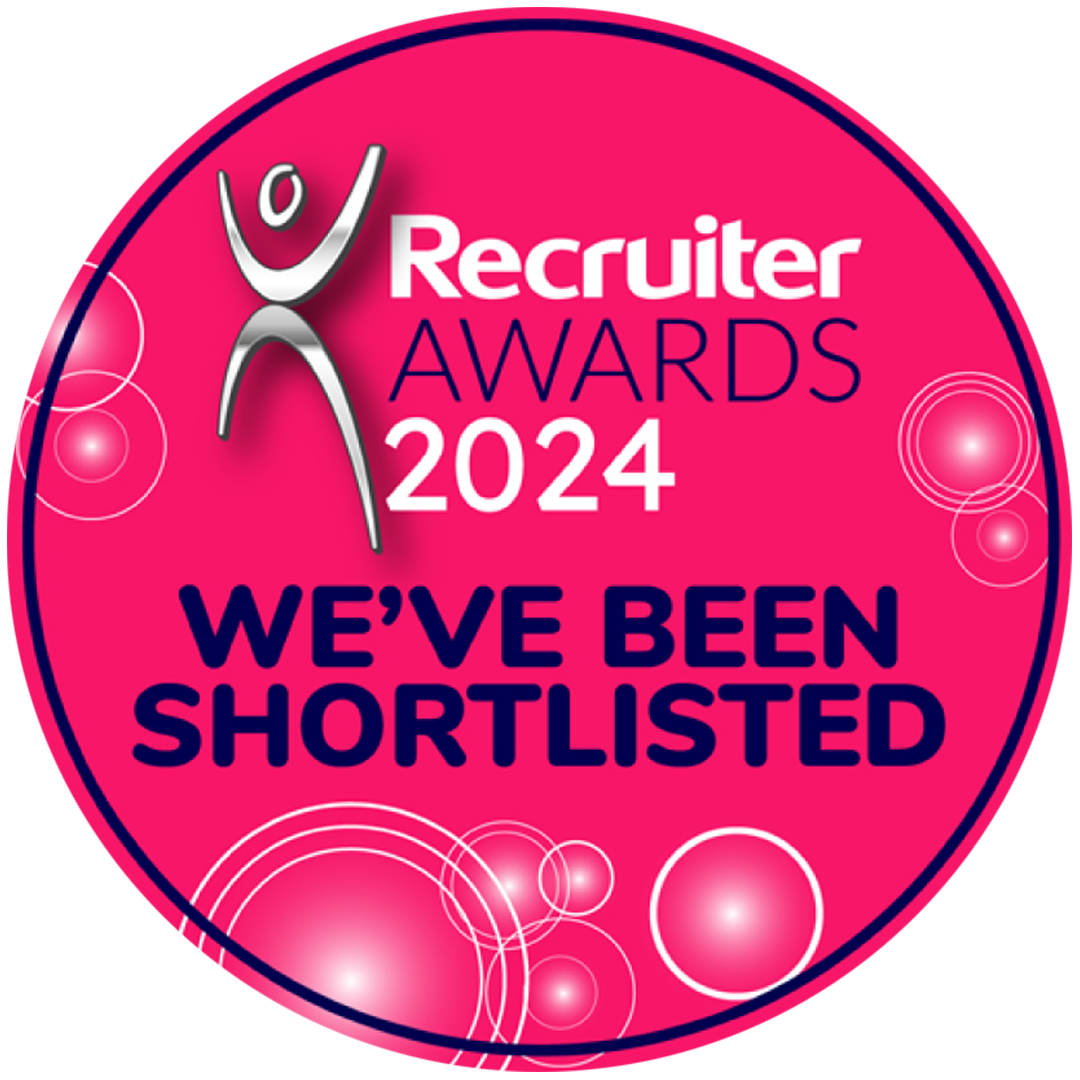Do you know how you’re spoken about when you’re not in the room? How do others truly perceive you? We talk to David McIntosh at KPMG about how to use authenticity on social media to escape the competition. Make sure you show up consistently and with high quality content. Find out how to achieve the best results when using personal branding on LinkedIn.

Please give us an introduction about yourself
Hello I’m David Mcintosh. My official title is an Apprentice at KPMG UK.
In a nutshell, I’m a Management Consultant, Founder and Chair of KPMG’s social mobility network, and a podcast host.
I joined the firm through an apprenticeship program, almost 6 years ago, so I am near the end of that now. I joined straight from school and initially had to navigate the industry with very little tools.
I’m also the founder and Chair of KPMG’s Social Mobility Network. It’s three years old, has over 1,000 members and has placed in the Burberry British Diversity Awards as the 2nd Most Outstanding Employee Network in the UK. Our network was also up for the Social Mobility Initiative of the Year at the same awards. I’m very privileged that has landed me in your AJ Chambers / Accountancy Age 35 Under 35 and Scottish Business Insider’s 35 Under 35. I was also up for the Inspirational Role Model of the Year at the same Burberry awards.
I’ve won other awards, but what I am most proud of is being a podcast host. Although I don’t feel like a host. I feel I am a purveyor of original stories. I get to find and talk to the most interesting people the world has to offer. And use my platform to share some of the highlights and lowlights that they’ve been on. As a result, I’ve got to learn through the eyes of them, and learn so many lessons.
What does ‘Personal Branding’ mean to you?
Personal branding is one of these terms that is thrown about on LinkedIn right now. No-one has the textbook definition of what it is. But I can share based on my own experience of what I think personal branding is. I think there’s a paradox of personal branding, or an irony, because there’s nothing personal about it. I believe personal branding is how you are included in conversations when you’re not physically there.
I believe personal branding is how you are included in conversations when you’re not physically there.
Who speaks about you and how you’re spoken about when you’re not in the room. How uniquely identifiable you are. The crux and the meat of personal branding is story telling. Your story. The ability to retrospectively look back and label some of the facets that make you, you. And how they are projected in conversations when you’re not there.
Conversations
And those conversations don’t need to be physical, they can also be digital. How you are interacted with on social media, for example on LinkedIn. Every time you post a piece of content, that is sharing another feather that makes you, you. Another string in your bow. People are interacting with that content and you don’t even know they are. I really believe people don’t know 95% of the legacy they’ve already created. What I mean by that is all of us have very little amounts of feedback and touchpoints about how our story and how our brand makes people feel.
For example, if you went to get a coffee this morning. The barista smiled at you in a certain way or complimented your shoes. Or just served you a really nice coffee. It’s very unlikely you’re going to go back after your coffee and say “by the way, you made me feel really great, I feel really happy and inspired today”. Or “I really enjoyed that coffee and it’s put a smile on my face”. As human beings, we don’t proactively share how other interactions make us feel. So, personal branding is the invisible storytelling, the intangible feedback that exists. It manifests in how people talk about you and how they feel about you. If you have a good personal brand, your content and persona should feel like a warm hug on a cold winters day.

Long-term brand strategy
I had a friend, a fellow podcaster, who was going through a grievance process with one of their sponsors who said “Lewis, we’re not getting the financial return on investment from sponsoring your podcast, because you’re not selling the adequate amount per month”. But, they aren’t comprehending the brand awareness that they’re getting. It’s not like if you advertise on the back of a bus. I don’t think the marketing team is understanding how many units are sold because they saw it on the back of a bus during their commute.
Show up consistently and with high quality content
Similar to that, it’s important for personal branders to show up in as many different domains as possible, time and again. Consistently, and with trust. Even if it is TikTok, you have someone’s trust for 30 seconds whilst they’re consuming that content. So you best provide them with something whilst they’re doing that because it’s so easy to lose the trust of a consumer.
It’s really important for someone in industry or an entrepreneur to just show up consistently and with high quality content. Sometimes, even though content is not engaged with, it’s a long term brand strategy.
Personal branding and junior staff
Everybody has a personal brand whether they know it or not. It’s when people understand that everyone has one and then they take advantage of controlling their own narrative that they find more success. If you don’t dictate your personal brand and aren’t conscious of it, someone else will. I believe a lot of senior representatives have only been able to discover their personal brand in hindsight.
In that case, personal branding is like sitting backwards on a train. You only realise the landscape once you’ve passed it. Whereas, if you’re a junior colleague, you can actually construct the landscape. You’re sitting forward on the train and can see where you’re going. Everyone has a personal brand, it’s just the case that not everyone is aware of it.
If you don’t dictate your personal brand and aren’t conscious of it, someone else will. A lot of senior representatives have only been able to discover their personal brand in hindsight.
What I think is most important for junior staff, in terms of personal branding, is that most people join an organisation straight from university or school. They are very malleable, and act like a blank canvas. The colours haven’t been chosen yet, the thickness of brushes haven’t been decided, the type of paint isn’t formed. I think personal branding and storytelling are the differentiator for junior colleagues. It’s the key skill to become a specialist sooner, or be uniquely identifiable for a set of traits and skills.
Becoming identifiable
For example, when I joined KPMG, I became the social mobility guy as soon as I joined. I became uniquely identifiable. So, when I’m not in the room and someone mentions my name, they say “oh, it’s David McIntosh the social mobility guy” or “it’s David McIntosh the podcaster”. I’ve never been told I’m a great management consultant or accountant. It’s always these extra frills that are sitting in the periphery of my day job. That’s a brand acquisition strategy which is giving people access to my 9-5 skills. So, I think it’s really important that junior people do that sooner rather than later. They can escape competition by being authentic. No one can outwork them at being them. No one can be better at being them.
Companies should embrace personalities
There’s also an onus on the organisation to create a culture that embraces that. It’s a two-way street. If a company isn’t willing to support them, or listen, then they’re going to get a bad feedback loop. They’re never going to deploy it in the workplace and they’re only going to do their 9 to 5.
I think social media has made the personal brand move from being invisible to very much visible. Prior to LinkedIn and social media, personal brand was solely the conversations had about you behind your back. Now it’s the conversations you create for yourself via content, via thoughts, and via what you post online.
There is still an important role for companies to play in embracing different personalities. I’m really conscious that KPMG has taken great strides when it comes to building a more inclusive workplace – really looking for people to come as they are.
To open up our profession, we’ve been tackling the issue of nepotism head-on. We launched Opening Doors to Opportunities earlier this year, giving even more young people from social mobility cold spots a better idea of what a career at our firm might entail. It couldn’t be more important. Our own research showed that fewer people from low socio-economic backgrounds get these sorts of opportunities. Worryingly, the vast majority of people still feel think that becoming a doctor, lawyer or accountant is easier if your parent worked in a similar profession.

Is Personal Branding under-represented in certain areas?
From a social mobility point of view, it is definitely under-represented. The reason is because organisations are, only now, embracing the stories of people from a lower socio-economic background. Especially in financial services. Prior to that, I believe the industry was very much perceived as middle-class, middle-aged, white and male-oriented. Joiners from a lower socio-economic background would try to mirror and be a chameleon. Adapting their traits and ways of speaking. That had the propensity to disrupt an organisation and bring in these extra facets. So, it’s much harder for people from a lower socio-economic background to feel brave enough to share these parts of them. But I really believe that innovation occurs in an organisation when we tap in to those life experiences.
I think social media has made the personal brand move from being invisible to very much visible. Prior to LinkedIn and social media, personal brand was solely the conversations had about you behind your back.
I’ve heard of organisations that think they’re doing great social mobility. But in fact, they’re doing forced social mobility. These organisations think that social mobility is where they take a disadvantaged young person (David McIntosh, a guy that loves boxing, is very much working class, who speaks in slang, and dresses a certain way). And they put them on this ‘polished treadmill’. Change them from being this ‘scruffy little guy’ to being a very polished, well-spoken, middle class character.
But, that’s not good social mobility. That’s called a deficit discourse, where you’re losing all the innovation and personal experiences in which there are solutions. So, if a person comes from a disadvantaged background, they have faced problems we can pull solutions from. But if we put on this middle-class treadmill to change their tastes and traits, we’re losing out on all that innovation.
Socio-economic background
I’ve heard stories where people from a lower socio-economic background are more technocratic than performative. When performance is hard to measure for an individual based on metrics, social networks take central stage. Success isn’t about performance, it’s about perceived performance. But those from a lower socio-economic background don’t want to be so performative. They don’t want to put themselves in public speaking arenas to share their stories, or share their expertise. Some of this actually develops from childhood experiences.
I’ve heard accounts where children from single parent families (or where their parents work nightshifts) who don’t eat dinner together. These children now have a lower willingness towards public speaking. The dining room table is a stage when you’re young. It’s where you come home and speak about your experiences at school. How you interpret the world, and if you’re not getting that exposure, it actually creates a microfracture that translates into adulthood.
Is it improving?
I think it is. I think organisations are understanding that a lot of ideas don’t come from email chains, but social interactions. Such as around the water cooler, or breakfast before work, or team lunches. I read a great book called ‘The Formula’ by Albert-László Barabási. He’s a network scientist who went into an organisation and looked at the domains in which most problems were solved. It wasn’t over email or in meetings with agendas, it was actually around the lunch table or the bar after. Organisations are doing a really great job at creating those situations. Both in person and virtually, and I think they are reaping the rewards.
I remember speaking to a Partner at KPMG, and she was speaking to me about her own HQ. She asked me “David, do you have any suggestions on how we can make this office more inclusive for people from a lower economic background”. I asked her to reinstate the pool table we used to have. We used to have one, but I presume we got rid of it due to productivity because people weren’t at their desk. I can imagine many problems were solved around that pool table!
Influencing others at KPMG
This is one of the pieces of feedback I feel so proud of at KPMG. I was one of the first to speak about socio-economic diversity at KPMG. By doing this, other people came towards me and said “David, I’ve been at the firm for 30 years and I’ve never shared that my parents were on benefits, or I had the same hobbies and interest as you”. People started to bring that to the workplace.
Even if they’re not from the same background, they’re able to empathise with those people. This creates stronger bonds. You feel less scared to approach them when you’ve made a mistake in Excel or you’ve made a typo. If you create that sense of humility, I believe problem solving, failure resolution, and perhaps grievance resolution, takes better care of itself.
If you create that sense of humility, I believe problem solving, failure resolution, and perhaps grievance resolution, takes better care of itself.
I’ve noticed that when I get to do this public speaking gigs. People always ask “David, what’s your KPI for the social mobility network”. I really don’t have one, but I have an EPI; an emotional performance indicator. I don’t believe there’s such a thing as a bad story teller. We’re all great story tellers, every single one of us. I just think some people are bad story collectors. Every single day something happens to us that is story worthy. If we start collecting them, by the end of the year we have 365 stories that can inspire the next generation. Or even inspire people in our workplace and upwards. So, the EPI of my work is just people sharing their stories and creating stronger bonds.
Collecting Dots
Collecting dots, from a personal brand point of view, is creating an undeniable stack of proof that you are who you say you are. This can be by getting good client feedback, winning awards, publishing content online. Or just creating as much credibility about who you are as you can. And by doing that, you also interact with a whole bunch of people in the process. It a two-factor methodology where you collect dots – information, intel, connections – and then you connect the dots. So, that’s by connecting some of your insights with people that need it. Or connecting two of your connections with each other. As a junior colleague, you can’t do one without the other.
A lot of people at junior level will pass as many exams as possible, or churn out so much work, and not get the credit allocation for it because they’re not connecting that with other people. They’re not sharing it online, and they’re not putting their accomplishments on a pedestal.
For junior colleagues they need to collect as much information, feedback, credibility, and experiences as possible, and connect them to the right environments and people as they possibly can.
David McIntosh, KPMG, was talking to Robert Hunter at AJ Chambers.
Latest news
- The Budget | with Robert Leggett
- AJ Chambers Salary Guides 2025-2026
- CVs that turn heads | How to stand out to Accountancy and Legal employers










 AJ Chambers Recruitment Ltd,
AJ Chambers Recruitment Ltd,